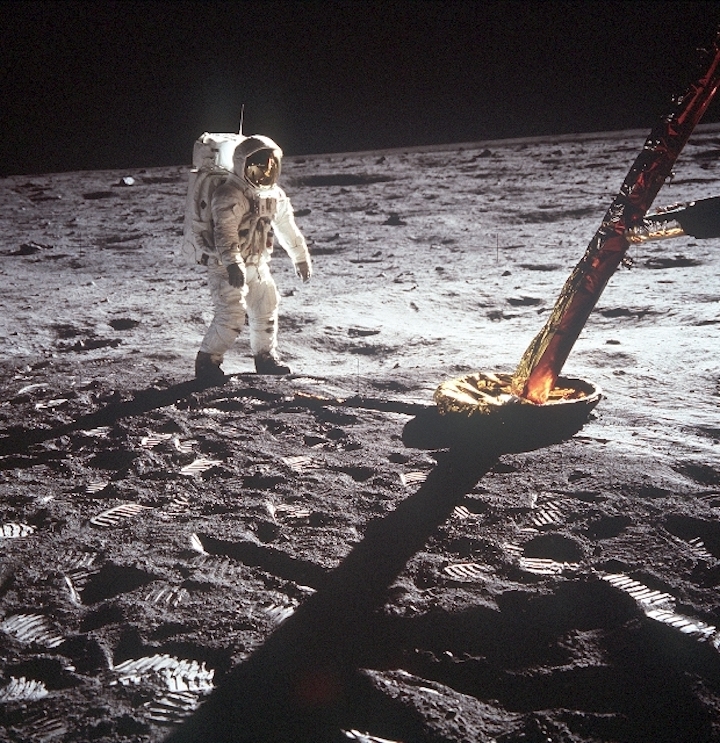As humanity gears up to return to the moon, more and more people may deny that we ever went there in the first place.
Just a small sliver of the American populace currently believes the Apollo moon landings were faked; polls consistently put the number at around 5%, said Roger Launius, who served as NASA's chief historian from 1990 to 2002. But that sliver may expand considerably in the coming years.
"The thing that concerns me more and more about this is, as time passes and the Apollo landings are farther into the past and fewer people remember them, it might be easier to embrace these kinds of ideas," Launius, who worked as a senior official at the Smithsonian Institution’s National Air and Space Museum in Washington, D.C., before retiring in 2017, said this month during a presentation with NASA's Future In-Space Operations working group.
The moon-hoax conspiracy really got legs when the internet came online, he added. Like-minded people who had previously printed out pamphlets and flyers in relative isolation were suddenly able to connect with each other quickly and get their ideas out into the world — abilities that further mushroomed with the advent of social media in the past decade or so.
The hoax claim should not spread on merit; the evidence cited by the deniers is, "in every single case, ridiculous," Launius said. (For a good rundown of these claims and why they don't hold up, see this classic 2001 piece by astronomer Phil Plait. To give just one example from Plait's article: No stars are visible in photos taken by Apollo astronauts on the lunar surface because the explorers set their cameras to have fast exposure times, and stars were simply too faint to be picked up.)
Launius also stressed that the Apollo landings occurred during (and largely because of) a space race with the United States' Cold War rival, the Soviet Union. And Soviet officials didn't make any hoax claims.
"They had both the capability and the desire to disprove this, if it was true — you know, if we hadn't landed on the moon but were faking it," said Launius, who discusses the moon-hoax conspiracy and many other topics in "Apollo's Legacy: Perspectives on the Moon Landings," which will be published next month by Smithsonian Books. "And they never said a word. That's a pretty strong element to me."
So, why does the moon-hoax conspiracy persist? Launius offered up a number of possible reasons. For example, some folks are just naive and poorly informed. This is a particularly significant issue for young people, who are more inclined to view NASA's website and a conspiracy theorist's YouTube channel as equally authoritative, he said.
In addition, some people are predisposed to be cantankerous or contrary, some like the feeling of knowing something that other people don't, and a smaller subset are peddling the conspiracy theory for personal gain. And the love of intrigue and a good story seems to be baked into our culture.
"Americans love conspiracy theories," Launius said, citing as another example the many outlandish ideas about the assassination of President John F. Kennedy (who officially put NASA's human spaceflight program on course for the moon in the early 1960s).
Educators need to take the hoax issue seriously and make an effort to answer questions, especially those posed by young people, about the Apollo landings, he added.
Nobody has set foot on the gray lunar dirt since December 1972, when the Apollo 17 astronauts departed for Earth. But that could change soon.
NASA is working to return astronauts to the moon by 2024, as instructed by President Donald Trump. The space agency's current plan calls for the construction of a small, moon-orbiting space station called the Gateway, which will serve as a jumping-off point for robotic and crewed sorties to the lunar surface.
NASA intends to build a sustainable, long-term outpost on the lunar surface over time. The lessons learned by living and working on and around the moon will then inform the next giant leap — the crewed exploration of Mars.
Quelle: SC


